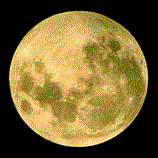
This page has been accessed times.

 |
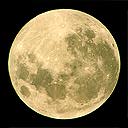 |
 |
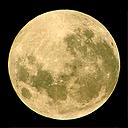 |
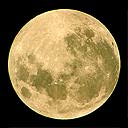 |
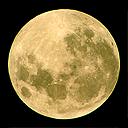 |
 |
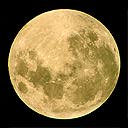 |
 |
 |
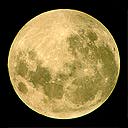 |
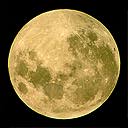 |
 |
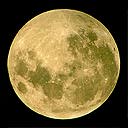 |
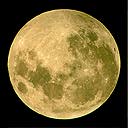 |
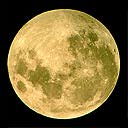 |
 |
 |
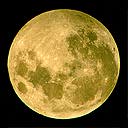 |
 |
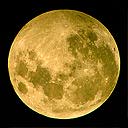 |
 |
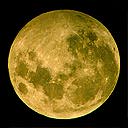 |
 |
Please note: All times are in Universal Time (UT) unless otherwise stated.
At first glance you may think that I've just wasted an entire roll of film on the full moon. The following illustration will assist you in seeing the "right" thing. While looking at the animation and the pictures, watch out for picture-to-picture brightness variations in the area marked by the red rectangle below as well as differences between this area and the rest of the moon. Granted, there isn't much action going on in the first dozen of pictures, but can you see that in the last few of them the interesting area is quite a bit darker than the rest of the moon? That's the effect of what is known as a penumbral lunar eclipse, which takes place when the earth happens to block an ever so slight portion of the sunlight that normally hits the moon, but still allows every part of the moon to get at least some direct lighting.

The pictures above resulted from a not wholly unsuccessful attempt at photographically recording the subtle shadings during the penumbral lunar eclipse of March 13, 1998. According to the Swedish almanac, the eclipse started at 02.14, reached its maximum at 04.20 and ended at 06.26. Although impaired by the atmospheric conditions, my limited skills and the humble equipment that was at my disposal, I like to think that the images obtained that morning were actually well worth the effort. Penumbral eclipses are often called "elusive" or "almost imperceptible" in the literature, and while it's fairly difficult to visually observe one of these events, my results show that it's much easier to see it on film.
A penumbral eclipse differs from other types of eclipses in that the entire surface of the moon is still easy to see throughout the event and remains relatively well lit with only a subtle shading visible, just like in my pictures. During a partial lunar eclipse, a portion of the moon gets so dark (although it never completely "disappears") that it looks like someone took a good bite out of it. The direct sunlight is obstructed by the earth, but some light gets refracted in the atmosphere and still finds an indirect way through. In the picture below the bright part is directly lit by the Sun just like the moon normally is. Since the film was exposed to achieve a good gray scale in the bright part, the dark one looks pitch black, but in reality it was faintly illuminated by the refracted light. Keep in mind that if there had not been an ongoing lunar eclipse when the picture was taken at 19.45, September 16, 1997, you would have seen the full moon!

When a total lunar eclipse occurs it may be difficult to spot the moon in the first place, and it most likely looks copper red since the faint sunlight that does reach its surface is filtered through the earth's atmosphere. However, the appearance of the moon varies quite a bit between different total eclipses. It's worth noting that all partial and total lunar eclipses are preceded and followed by periods of lighting conditions identical to those during a penumbral eclipse, but of course that phenomenon pales in comparison with its more spectacular cousins and therefore tends to be neglected. The picture below was obtained at 19.02 during totality of the September 16, 1997 lunar eclipse.
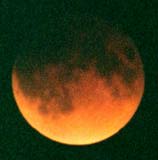
Due to my geographical location in southern Sweden, it was impossible to observe the eclipse from start to end since the moon set at 05.41. In practice, I had to call it a night long before that becuase of an increasing amount of interfering clouds and the fact that the moon was getting so low in the sky that atmospheric extinction made it pointless to continue. I took the last picture at 04.10, i e I couldn't even follow the event until the predicted maximum. The animation would have looked less truncated with a complete sequence of pictures. For once it would have been advantageous to live in the middle of the Atlantic ocean! Out there the moon was still high above the horizon when the eclipse ended.
The first of the 24 pictures in the table was taken at 02.16, the second one at 02.20 and then one new frame was shot every five minutes until 04.10. The estimated accuracy is -30/+90 s. To see when a particular image was obtained, just click on the thumbnail version in the table. As can be clearly seen, the pictures get progressively darker and take on a more brownish hue. Some of this effect can be attributed to the actual eclipse of the moon, but for the most part it's explained by the increasing atmospheric extinction. Since short wavelengths are more heavily scattered than long ones there is very little blue in the last few pictures.
I could very well have processed the images to achieve a more neutral and consistent colour balance, maybe resulting in a more pleasing visual appearance, but I decided against it. For one thing it would have made the shading more difficult to see. I know because I gave it a try. I also feel that leaving the colour balance and brightness/contrast alone is the only proper thing to do since I really don't have a way to separate the darkening or colour change caused by extinction from that caused by the eclipse, and it would be foolish to edit out the very thing that I try to document.
The large images that can be viewed by clicking on the thumbnails have been processed by applying an unsharp mask to compensate for a slight loss of focus. I've also removed artifacts caused by dust particles, but only in the dark areas surrounding the moon. The thumbnails have received some additional processing after the reduction in size.
The equipment used to acquire the series of pictures was very simple, consisting of an achromatic refractor with an objective diameter of 60 mm and a focal length of 900 mm coupled to a 2X teleconverter, yielding an effective focal length of 1800 mm. This type of instrument is frequently called a "department store telescope" and many people like to dismiss it as a simple toy. I, on the other hand, prefer to use it to the best of its abilities, at least until I have time to complete all of my telescope building projects.
To reduce vibrations, the mirror in my Canon FTb SLR was locked. Naturally I used a cable release. The telescope was mounted on an equatorial mount, but since the exposure time was as short as 1/30 s it was not necessary to engage the motor drive. Such a short exposure does not introduce any visible trailing at this focal length. I used a Perutz ISO 200 colour negative film. Perutz films are actually made by AGFA, but they are not necessarily exactly the same as emulsions sold under the AGFA brand.
The film was processed and printed at a local one hour minilab and the prints were scanned at 200 dpi using an HP ScanJet 4C 30-bit flatbed scanner.
All pictures, except for those obtained during the 1997 eclipse, were taken from my garden in Svalöv, Sweden.
As always, your comments and suggestions are welcome. Send e-mail to bengt@df.lth.se
Please also take the time to view my pictures of comet Hale-Bopp.
Follow this link for more images of the September, 1997 total lunar eclipse.
I maintain a general astrophoto page with a few images, among other things an animation of a partial solar eclipse.
Of course, there is a main page from which all the others can be reached.
The following external links may be of interest.
Lunar Eclipse Observer - Home Page It was Byron Soulsby, founder of the Calwell Lunar Observatory, who suggested that it may be of interest to investigate penumbral eclipses. For information on the study of penumbral eclipses I recommend The 1998 Penumbral Lunar Eclipses.
Eclipse Home Page Fred Espenak's superb site at the NASA/Goddard Space Flight Center. Don't miss out on this one since it may very well be the best eclipse site on the net.
The American Lunar Society maintains a site dedicated to our planet's natural satellite.
Images and text copyright © 1997 and 1998 Bengt Ask.